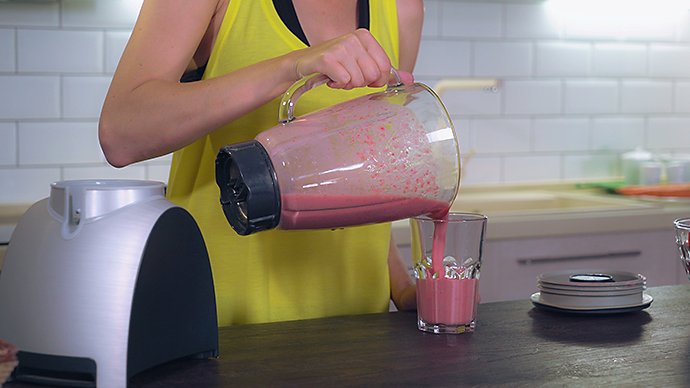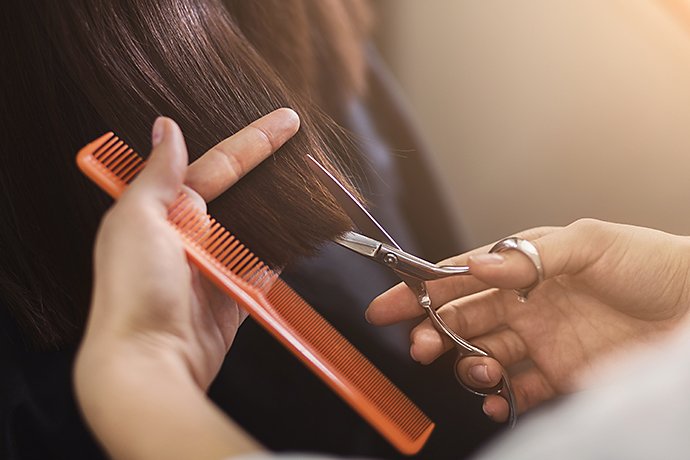What is ASMR and how do you make ASMR videos?
You might have come across videos online and seen people whispering into microphones, brushing hair or cooking steak in a sizzling pan for hours on end.
These are all examples of ASMR, a physical and psychological sensation brought on by deliberate sounds, movements and auditory experiences.

What you’ll learn:
- What does ASMR stand for?
- How does ASMR work?
- How to make ASMR videos
- ASMR inspiration
- Using Premiere and Audition to create ASMR videos
What you’ll learn:
Autonomous Sensory Meridian Response, or ASMR, is a physical and psychological sensation that instils a feeling of calmness for those that experience it. People report feeling a tingling sensation on the back of the head and neck, lower heartrate and a relaxed mood.
It is usually brought on by listening to quiet sounds, such as a crackling fire or whispering, or watching videos of people performing actions slowly, like painting or cooking.
Not everyone has the same reaction. For some people, ASMR videos do nothing at all. For others, it is said to reduce anxiety, alleviate stress and help people fall asleep.

How does ASMR work?
ASMR is a relatively new field and there isn’t much in the way of confirmed scientific discovery in it. Though everyone’s experiences can be different, quiet noises and slow movements are thought to activate sensory receptors in the brain, which causes the tingling and relaxing feelings that some people describe.
How to make effective ASMR videos.
ASMR videos come in varying forms – all offering a different audio and visual experience. If you’re considering making ASMR videos, you’ll need to first decide what type of video you’re going to create. Effective ASMR videos include several elements, including:
- A sensitive microphone – remember, ASMR videos are all about sound, so you’re going to want a powerful microphone to record yours effectively.
- Calming and soothing voice – a lot of ASMR videos rely on voice, whether whispering or speaking slowly. You’ll need to keep yours soft and soothing.
- Use what you have at home – whether painting, brushing your hair or using an iron, most of the tools used in online videos can be found around the house.

What you’ll need:
You’ll need a camera and a microphone to record your video. You’ll also need editing software to cut your video together before you upload it online. Industry standard video editors like Adobe Premiere Pro should also be on the list.
You don’t need expensive equipment, but some creators like to use a binaural microphone to transmit sounds individually, to the left and right ear.
ASMR inspiration.
ASMR videos come in all shapes and sizes and each focus has their own fans and followers.
Some people only enjoy the experience when watching people perform tasks, while for others, this has no effect. Likewise, some viewers may only feel a tingling, relaxing sensation when they hear whispering – but for someone else it might only happen when they hear the sound of a typewriter’s keyboard.

Whispering.
Whispering or talking softly is a common theme in ASMR. Using different quiet tones and stressed pronunciation are techniques used to help listeners relax.
Blowing.
Blowing down the microphone, or the sounds of a soft wind, are another popular branch of ASMR videos.
Scratching and tapping.
The sounds of tapping on glass, or scratching, while stereotypically bothersome, are actually often enjoyed as part of the ASMR experience.
Page turning.
The rustling of paper, turning of magazine pages and sounds of reading a book are all firm favourites in the ASMR gene.
Eating.
Some ASMR videos feature scenes of people eating. Focus in on the sound of chewing, or the noises made by food being cut, or prepared.

Quiet noises.
Crackling fireplaces, rustling paper, brushing hair – all these simple noises occur regularly in ASMR videos.
Role play.
Some videos involved role play, such as performer pretending, they are a hair stylist or a chef, talking to the viewer and performing a task, such as straightening their hair or washing vegetables.
Performing a task
Task videos are common too, such as cooking, painting or drawing. The microphone is set close to the moving elements of the video, such as a sizzling frying pan or the scratch of a pencil on paper – so that sound is recorded effectively.

Tips and techniques for creating ASMR videos.
Getting creative with your ASMR videos is half the fun. Below are a few tips and techniques to start you off on your journey.
Remember the basics.
Keep to the basics. Remember that ASMR is all about the sensory experience, everything should be slow, quiet and deliberate. The goal of ASMR videos is to relax viewers and soothe their anxiety, worries or stress.
Choose your length.
The duration of an ASMR video can vary wildly, some are a few minutes long, others can be hours. Think how much time you have and how much effort you’re willing to put in before choosing a length for your creation.
Be comfortable with the scenarios you’re role playing.
If you’ve decided to include role play or an acted scene in your video, make sure you know how to act naturally in it. You could opt for something you’ve likely experienced, like getting a haircut or going to the dentist.

Be yourself.
The ASMR video creators who build the biggest following do so because they build a relationship with their audience via regular uploads. The better you are at making people feel included and relaxed, the more chance your videos have of being popular.
Selecting your set-up.
Use low lighting, as this is more likely to make people feel relaxed and drowsy. Shooting from a slightly lower angle can also create the perception of comfort. It’s best to keep your camera steady by attaching it to a tripod or Steadicam, as too much movement may bring people out of the ASMR trance.
Using Premiere and Audition to create ASMR videos.
To get started, you’ll need to get to grips with a video editor so that you can edit and upload your creations online. You could start with Adobe Premiere Pro. For recording and mastering your sound in high quality, a program like Audition is a great start.

Using a video editor.
Getting to grips with a video editing tool like Premiere Pro can help you create quality videos ready for uploading to sites like YouTube. You’ll be able to cut and edit your clips into a timeline and export in high quality.
Colour correction.
Lighting can be an issue with live filming. Natural light and shadows will appear differently from different angles. To combat this, you may want to invest in a powerful light to make sure your videos are clear and engaging.
To give your videos a uniform look throughout, you’ll want to use a colour correction tool. With colour correction, you can brighten darker scenes, boost particular colours and reduce glare from light sources.
Using special effects and animation.
Add transitions, special effects or animated graphics to your videos with a post-production program like Adobe After Effects.
With this visual effect software, you can add titles to your videos, text or background settings. You might find this especially useful if you’re creating role play videos. You could change the background and place yourself in a barbershop or restaurant kitchen.
Sound editing.
Sound is the most important element of ASMR videos, so it’s essential that you get it right. Record clear, high-quality audio with a well-placed microphone to ensure you pick up all the nuances of your sounds – whether that’s whispering or brushing hair.
You’ll then need to edit and master the audio to with a tool like Audition to ensure the sound is balanced and clean, free of microphone pops, rustling or background noises.

Cleaning up audio files to create ambience.
When you record live sound, you’ll often pick up the noise of the room you’re in. Even if your room sounds quiet to the human ear, a good microphone will still be able to pick up the sounds of the wind outside your house, or even the reverb and echo of your bedroom.
Adding audio effects in the post-production stage of your video creation can help to reduce background noise, balance out audio decibel level and create a more professional sounding video that appears to have been recorded in a soundproof booth.
Audio filters.
Adding audio filters can change how audio sounds, and even feels. High-pass and low-pass filters can affect what audio frequencies people hear. Other audio effects can change the direction a sound seemingly comes from – if you wanted to have a particular sound play in the left ear, for example.
What to do when people ask if it’s sexual.
Tell them it’s usually not. Part of this misconception arises from early descriptions of the sensation including terms like “brain orgasm.” Sexual ASMR is a whole separate genre, says ASMR expert Karuna Satori. “But ASMR in itself is not sexual. It’s a simple feeling.”
“It’s about intimacy, not sex,” ASMR creator Glow says. “It gives health benefits to so many different people in so many different ways, so why categorise it like that?”
A final piece of advice: When you get in front of the camera, try to be as relaxed and calm as you want your viewers to feel. Be yourself, recall your first or best ASMR experiences, and project that peacefulness, that gentleness out into the world.
Then, edit your ASMR video on your phone or computer, and share to YouTube, Instagram, or other popular social channels. Who knows? Maybe you’ll whisper your way into becoming the next ASMR celebrity.
Contributors
You might also be interested in…
Introduction to video editing.
Learn the principles of video editing and practical tips for both big and small screens.
Understanding camera shots in film
Explore the most common camera shots and learn when and how to use them to greatest effect.
Setting up a home recording studio.
Explore the basics of creating a space at home to capture high-quality audio.
Finding the best DAW for your audio needs.
Learn how to select a music or podcast mixing platform to meet.
Get Adobe Premiere Pro
Create flawless productions with the industry-leading video editing software.
7 days free, then £21.98/mo.



